Home » Posts tagged 'education'
Tag Archives: education
Change Makers
By Gabby Lembo
Being a teacher is a lot more of a responsibility than people think… Teachers not only are responsible for creating lesson plans, instructions, and teaching but also making their classrooms a safe and comforting environment for students to learn. Being a teacher is way more than just teaching but also being someone to look up to, someone to go to, and shoulder for students to lean on! With being a teacher in today’s classrooms, there’s a lot to improve from as we have moved away from traditional text book teaching and more towards technology, hand on activities, and even independent work to learn from instead. After visiting WE Virtual Learning Center, It has taught me a lot about what it takes to be an educator. This website is made for teachers and includes surveys, planning tools, planning calendars, and how to make an impact.
This website allows all teachers to come together, share tips, stories, and how they make an impact on their students.
There are multiple pages including, WE teacher courses, WE schools, action campaigns, We schools, action campaigns, lesson packages, supporting resources, virtual workshops, and video libraries. It offers a lot of beneficial resources for how teachers can make their classrooms better! I recommend this website to current teachers and future educators! Give it a look!
Below are some images from the website:


Accessibility Tools You Can Use in the Classroom!
By Gabby Lembo
Why It’s Important:
Using tools in classrooms that allow all students to learn, no matter their abilities or disabilities is important. This allows all students to be engaged, understand materials, and also participate. Using some simple tools in your classroom can help students get a better understanding and also use these tools in the future. Some students need help in certain places, having these tools like speech- to- text, highlighting, or even listening options can really help students in the classroom! Lets learn more in depth about it and some tools I think you could look into!
Access Ability for Chrome:
This tool allows students to listen or summarize any text on websites. This can be beneficial for students who like to follow along as they read or if they have a hard time reading in general.
This website offers:
- Highlight bar
- Hover text speech
- Being able to change fonts
- Change background color and text
Input Tools for Translation:
This tool allows a translation feature and a writing tab for a variety of languages. Students can choose the language and have the ability to type on the keyboard. There are different menu options for accents. Translation tools for learning are beneficial for language barriers in classrooms or even trying to learn new languages.
Reworditify:
This online software is great for reading, learning, comprehension, and teaching. This tool can be used in various ways like teaching words, better vocabulary, engaging lessons, and improving learning outcomes. This can be both helpful for teachers and students.
Screencastify:
Screencastify is a great tool for making presentations, instructional videos, or explaining. This tool can be used for web cam recording, video editing, and makes your screen into a video. It is most used for tutorials, lessons, and can be uploaded to YouTube or shared with others.
Zoom Text
Zoom Text is an online magnifying tool to help people with bad vision. This tool can be used for text, images, and an easier time with online applications. This tool allows the users to zoom in from 1.2 x to 36 x. It also offers lens views, with just a magnified view of a portion of the screen. It offers color customization’s based on inverted colors and contrast, this can be beneficial for students who have a hard time reading with certain color schemes. Overall, this tool can be helpful for students who have bad vision or a hard time reading with certain colors.
Resoomer:
This is an extension you can download that summarizes lengthy online articles in 500 words. The summary concludes the main points of the argument and important facts. This can help students get the main objective, key ideas, and concepts without the unnecessary parts. This can be beneficial for students doing a presentation, essay, or even studying.
Move It:
This extension helps students incorporate breaks while being online. It is very easy to spend a lot of time on the internet mindlessly scrolling or working on assignments. It is easy to get burnt out or lose track of time. This tool allows a “brain break” to pop up on your screen when downloaded. Students can set the notification interval, this allows them to decide when they want the activity to pop up. This is a really unique tool and I can see how this can be helpful for students!
Conclusion:
Overall, these are only 7 different web tools I discovered and there’s tons more out there! These tools can be beneficial for everyone, or even students who need a little more support in certain areas. It is important to include these tools so every student can learn no matter what. Try checking some of these out and see if you would use them in your classroom or even everyday life!
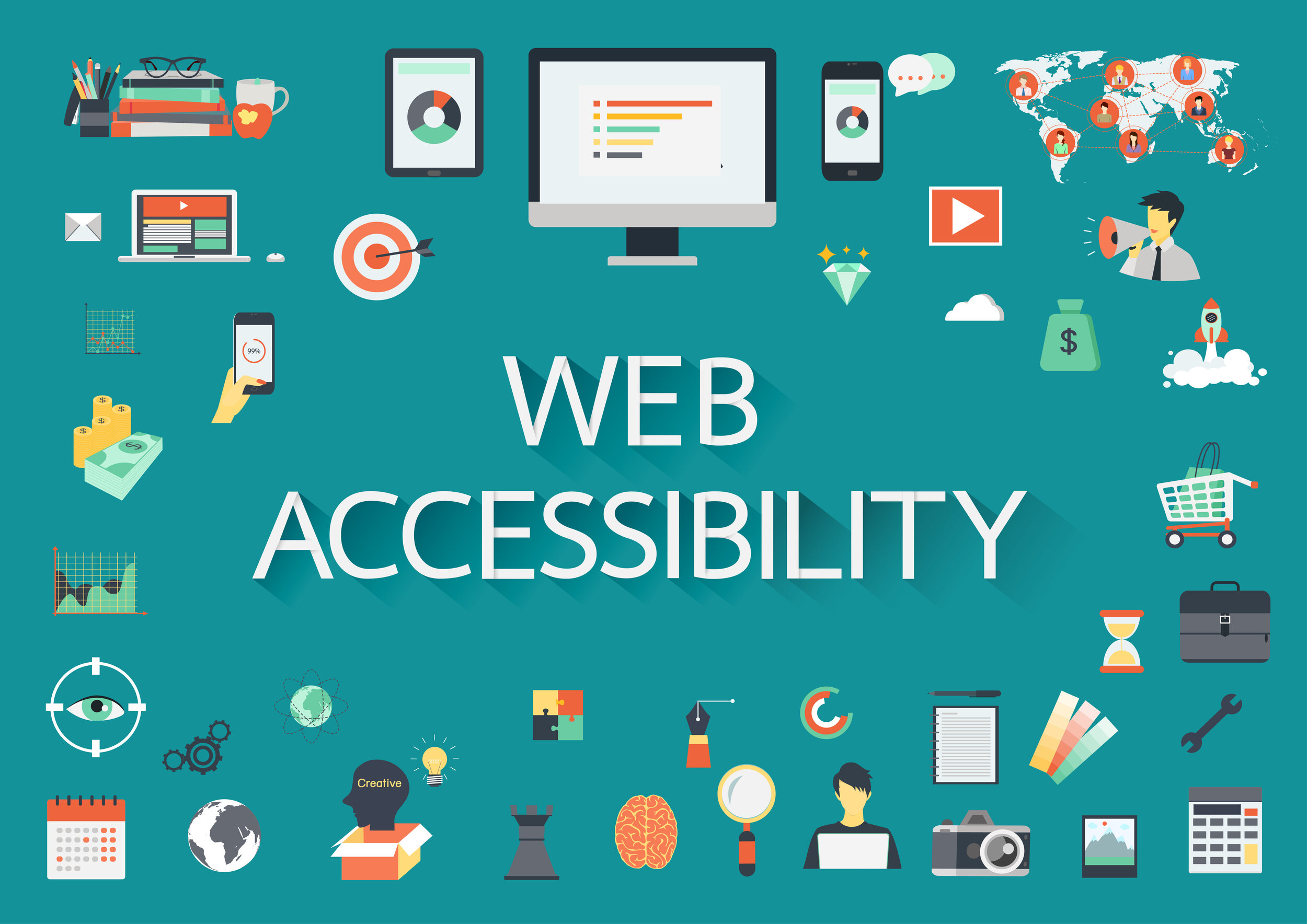

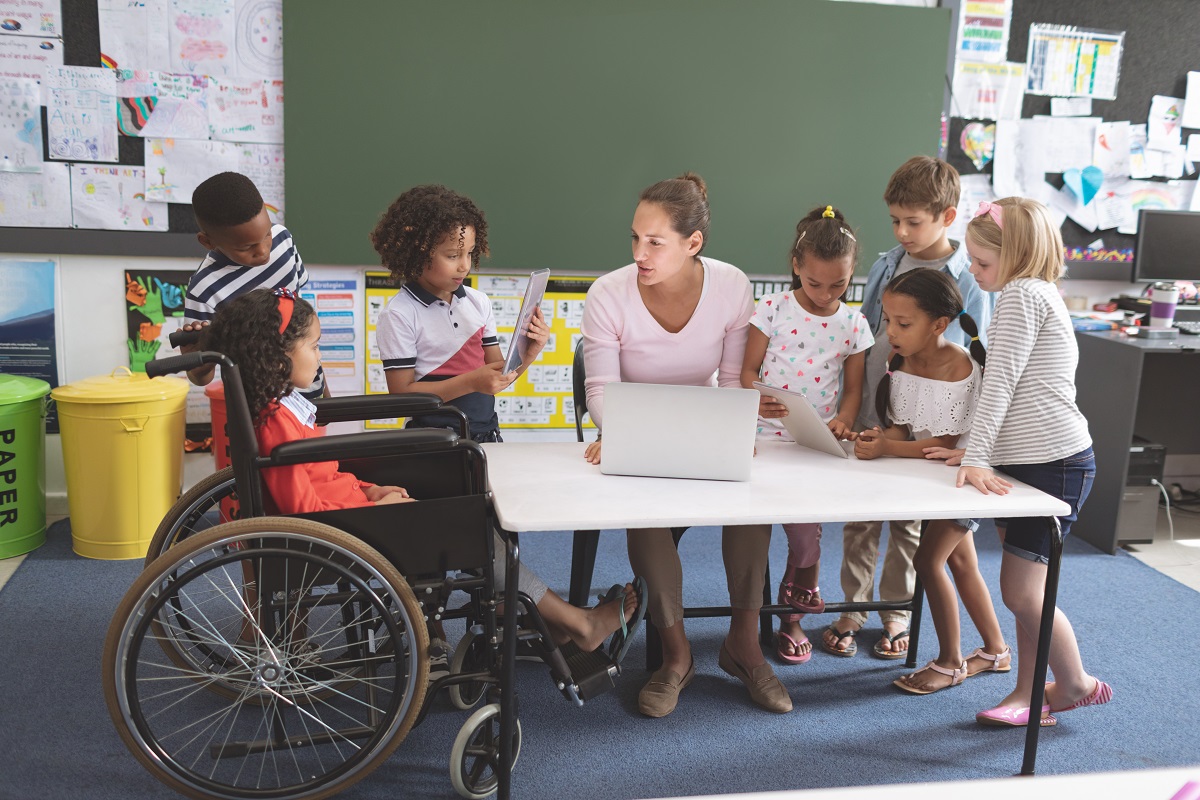
Virtual Tour of 360 Cities
By Gabby Lembo
Summary:
After looking and taking the online a virtual tour on Stock 360 I am completely impressed and surprised I never heard about it sooner. The website had 3D pictures of places,cities, beaches, and basically any place you can think of on this website. Not only did they have so many insane places that people dream to once see in real life, but the experience of being able too click around and see it in 3D made it so much different and more realistic. When you click on the places, it offers a video/picture that you can click around and get a idea of what it looks like in real time.
My Thoughts/Opinons:
As someone who dreams of traveling the world and seeing all different places this website was extremely cool to research and explore! A lot of these places on this website are on my bucket list, and I want to visit at least once in my life. Getting to do a 3D tour was the closest I can get to visiting it at this point in my life. I have always wanted to go to Italy, because I am Italian. Going to see Florence and Rome and try home made gelato and pasta is something I have always wanted to do! Not only does it give the experience of getting to see it in real life but it can also help people plan future vacations. There is so many different places around the world and some of these places I have never heard of. This website is not only extremely unique but it is also extremely educational. I highly recommend this to anyone just to take a look!
Below are some images of what the website looks like/ offers:


Collaboration in Education
By Gabriella Lembo
What is collaboration?
Collaboration is coming together with one person ( or many) to express opinions, elaborate, and combine ideas.
People use collaboration in their everyday life’s. In my opinion, some things are easier when you have someone to assist you and navigate in helping you. Collaboration can be anything from helping you in a group project to even someone helping you with in groceries. As humans, we work together to help each other out. Along the way a simple gesture can lead a friendship.
In my education experience, I have enjoyed collaborating with others for projects, home works, and assignments when allowed. Dividing up certain tasks/ jobs makes the assignment more enjoyable as well has having company around you. I have created a lot of friendships and even have talked to people I would have never talked to before when teachers assigned partners. Although this seems comfortable or awkward, it actually isn’t.
On the other hand…
However, as much as collaboration is extremely beneficial, there CAN be negative aspects. I have had a couple experiences where I have gotten stuck doing a lot more work and picking up others slack. This can be extremely frustrating when in a work environment because working together is suppose to make it less detrimental! This can happen sometimes, so people chose to work with people that have the same work ethic as them. I enjoy working with others when I feel like we have a lot of different ideas to explore and bounce off of each other. There have been a couple of times where I can even improve work with others rather than by myself. I have noticed that I can create really good projects and presentations when I am surrounded with others that can expand my thinking process. I think teachers should use collaboration in classrooms more often and even try pairing students up with others they think would work well together!
Collaborating in other ways:
Collaborating can in all different kinds of ways. Putting students in centers, groups, and taking them out of their comfort zone.
Below is a picture I found on X from TCEA , it shows creative ways to get the students the students involved.
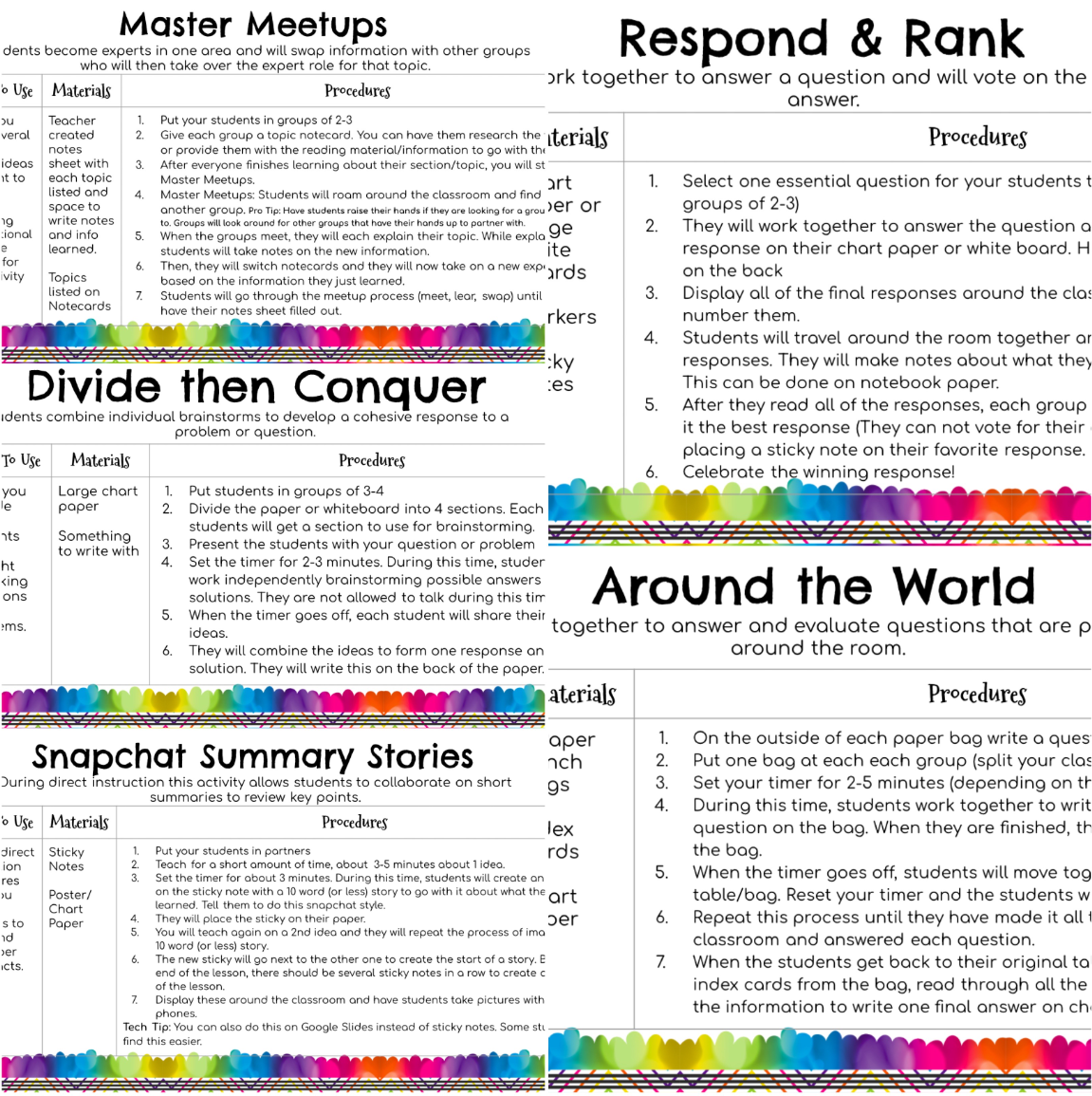

Elementary Education AI Dicussion
By Gabriella Lembo
Introduction to Article:
Getting Started:
When working in an elementary-level environment it is important to explain what the concept of this lesson will be. Being aware that you need to explain everything to a child is important to keep in mind. Explaining what Artificial intelligence is to a younger student will be the start. Although most people are aware of what AI is, you must explain it to all students to have a basic understanding. This article gives you advice on how to introduce this to the students. You can make connections to how they use AI without knowing it. This can be objects like …
- Alexa
- Google Assistant
- Netflix
- Spotify
This can make it easier for the students to make the connection.
Video Comprehension:
To further make sure of understanding for students the article suggests using videos like
“ What is artificial intelligence”. If the teacher is having a hard time explaining AI in a way a child in the grade level of 3-5 will understand, then the video is a fun and easy way to ensure comprehension. I’ve seen this technique used a lot throughout my years at school from elementary level to even high school level.
You can explain that AI can be used as a “Google” kind of resource. It is there to help you, you can research subjects and also ask questions about math, reading, science, etc. Having these students be aware that AI is an additional way to improve understanding of a topic rather than using it to cheat is very important. You can demonstrate how to properly use AI to its full extent and all features.
Definition:
“ AI is the science and engineering of creating computer programs that can imitate human intelligence. AI cannot become human, but it can perform tasks in a human-like way”( Page 15).
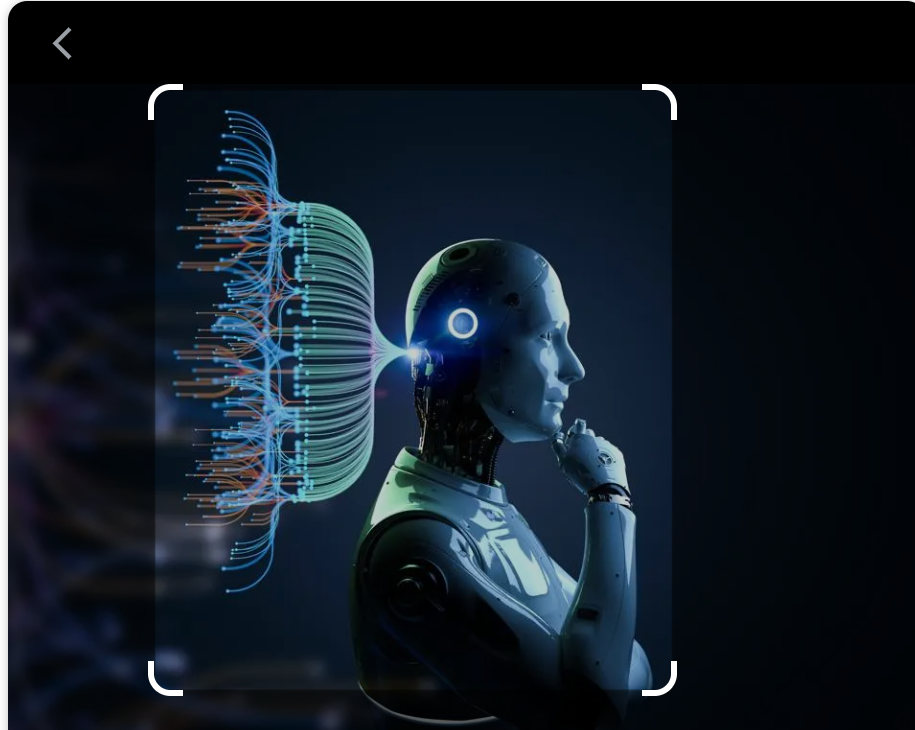
This image shows a representation of AI
Ending It off…
I personally think having class discussions is a great way to see where all students fall in understanding the topic. It is not just a lecture but rather everybody can contribute different opinions, ideas, and work off of each other. This teaches students how to participate in a group discussion and understand the material being presented. Having a class discussion on how they already use AI will be a less “intense” way of introducing the subject with simple understanding. I think with a topic like this a group discussion is the best way to start off!
Virtual Reality Could be the Future of Education

Virtual Reality is quickly evolving and becoming a second world through our eyes. To be able to see different worlds and experience things through a headset can mean students can be exposed to more educational resources. Students can learn about other countries, anatomy, the ocean, and much more with one simple tool.
Students can take a quick trip to France in 40 minutes within their class period with a VR headset. VR allows the users to see different things easily, and very realistically. Virtual Reality can bring more engagement into the classroom as well because not only is it informational, but it is a fun experience for students. It can give the students something to look forward to in school. Virtual Reality allows students to see things in different dimensions, different countries, space… mostly anything you can think of. VR headsets can be very beneficial in the classroom.
In terms of Global Collaboration, students will easily be able to see into a different country and interactively see it themselves. Using Virtual Reality to teach students about other countries can be more impactful because the students will be able to see the world in their own eyes without actually being there, and it is very different than just looking at a photo. It gives the students more interest in wanting to see more of the world and learn about what is going on in different places.
Virtual Reality can be a great resource in the classroom for many different reasons. Schools should look more into these devices because the benefits and convenience of using them are unbeatable for what these simple devices can do!
Thank you for reading!
Excitement About Virtual Learning
For this week’s blog post I explored the WE Learning Center. This website provides many tools for educators to use to make teaching and learning better. A tool that I am excited to use are the workshops on the website. These workshops include educational information as well as games such as Bingo to better engage students in the topic of discussion. I am excited to use this tool because it can be added to a lesson plan or used as a lesson plan. Additionally, if I cannot apply any of the workshops to whatever topic I am teaching, I can use the workshops as a template for my lesson plan and for activities to do with my students.
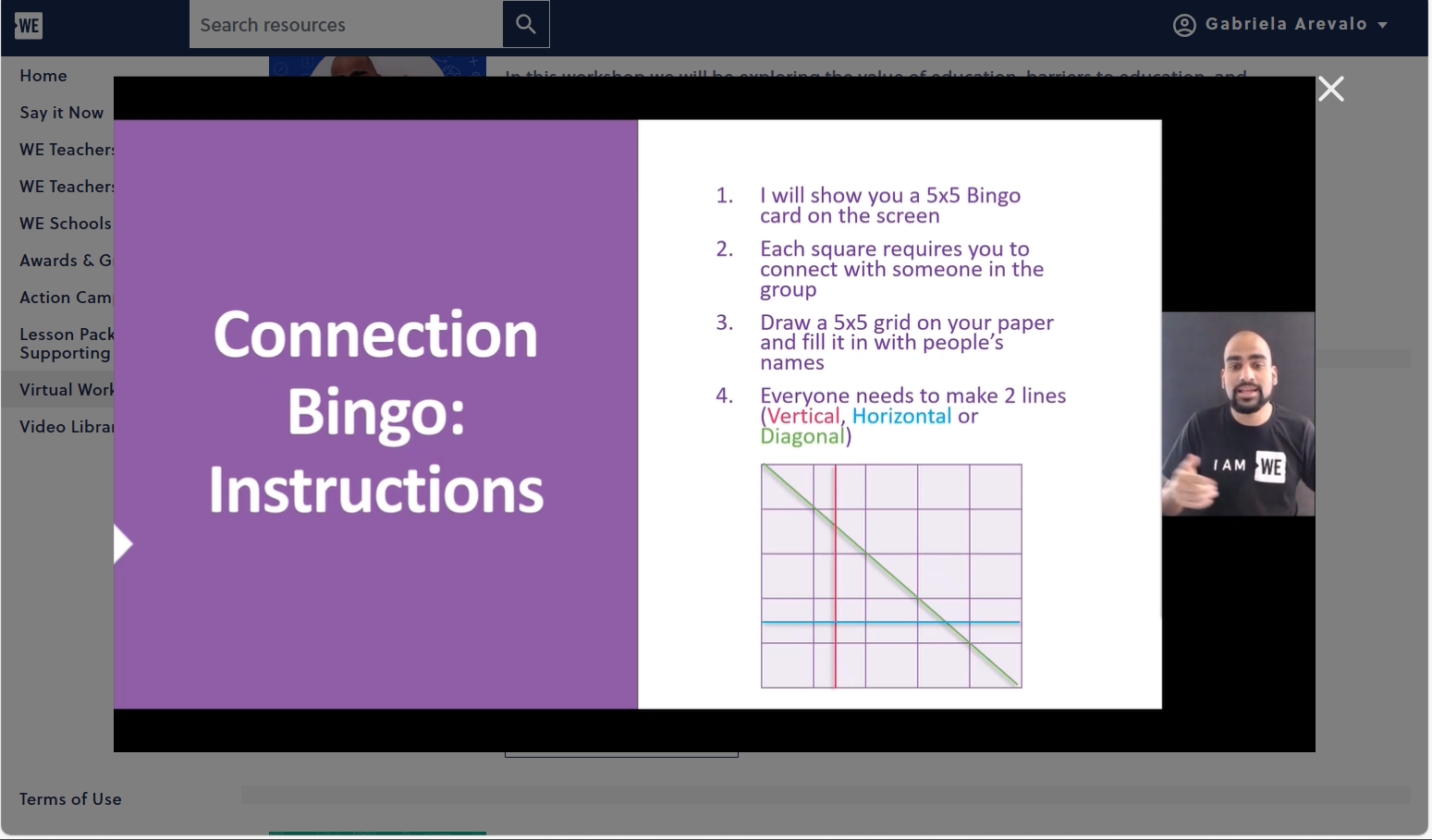
The next virtual learning tool that I am excited to utilize is the teacher courses. These courses provide information provide worksheets for not only students but educators as well. These courses cover many different topics, and you can take the ones specific to things you may be unclear on regarding to teaching. Each course has a worksheet paired with to ensure that the educator thoroughly understood the information given to them. This website not only has tools to introduce in the classroom but also has tools to handle different and maybe difficult topics in the classroom.
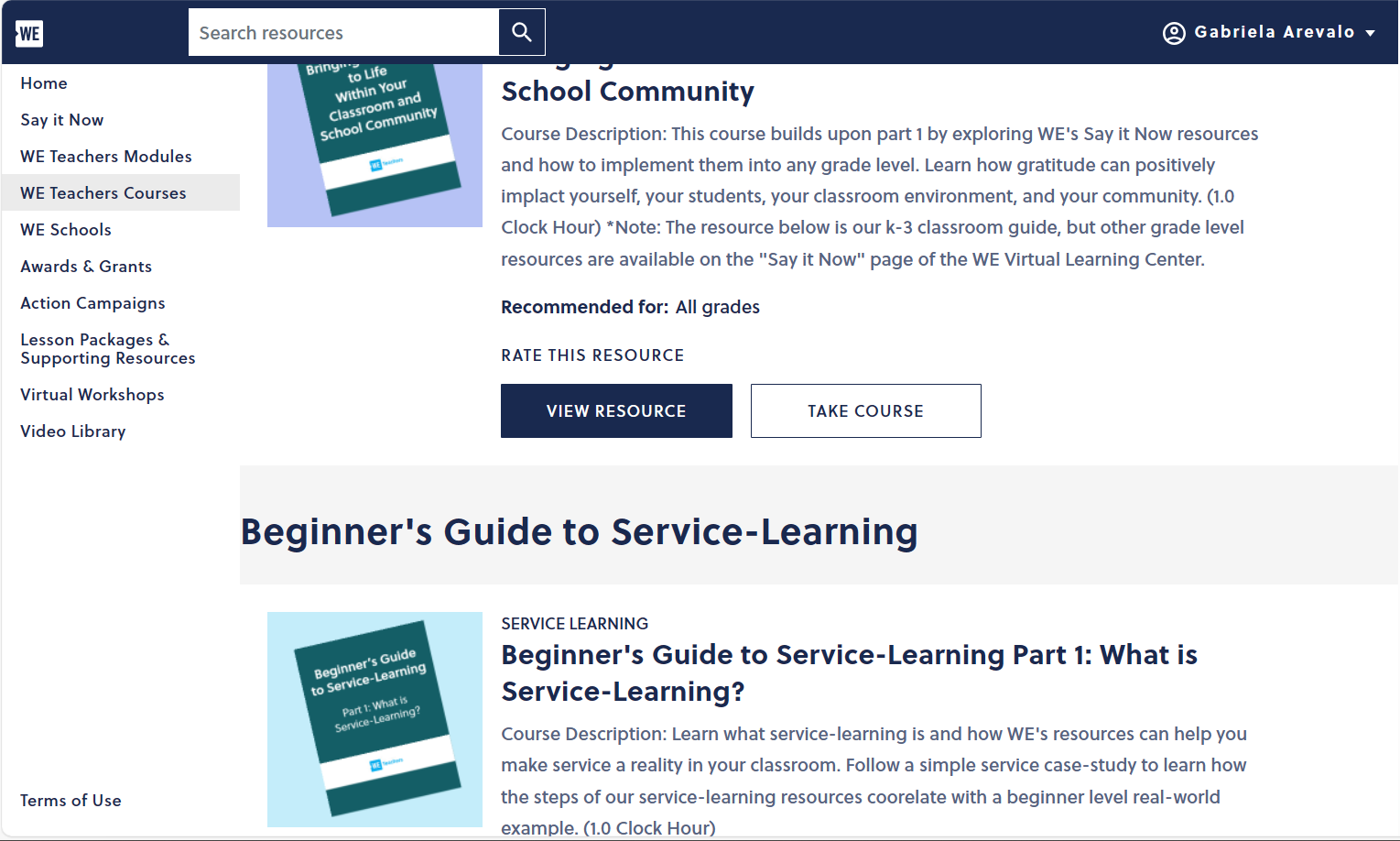
This virtual learning center also has a video library filled with different types of videos to educate others. I am excited to use this tool when I feel as though someone else may present a topic better. Other people have different ways of looking at things so introducing new people to your classroom (such as the ones in this video library), which could help my students to learn how to look at things from a different perspective.
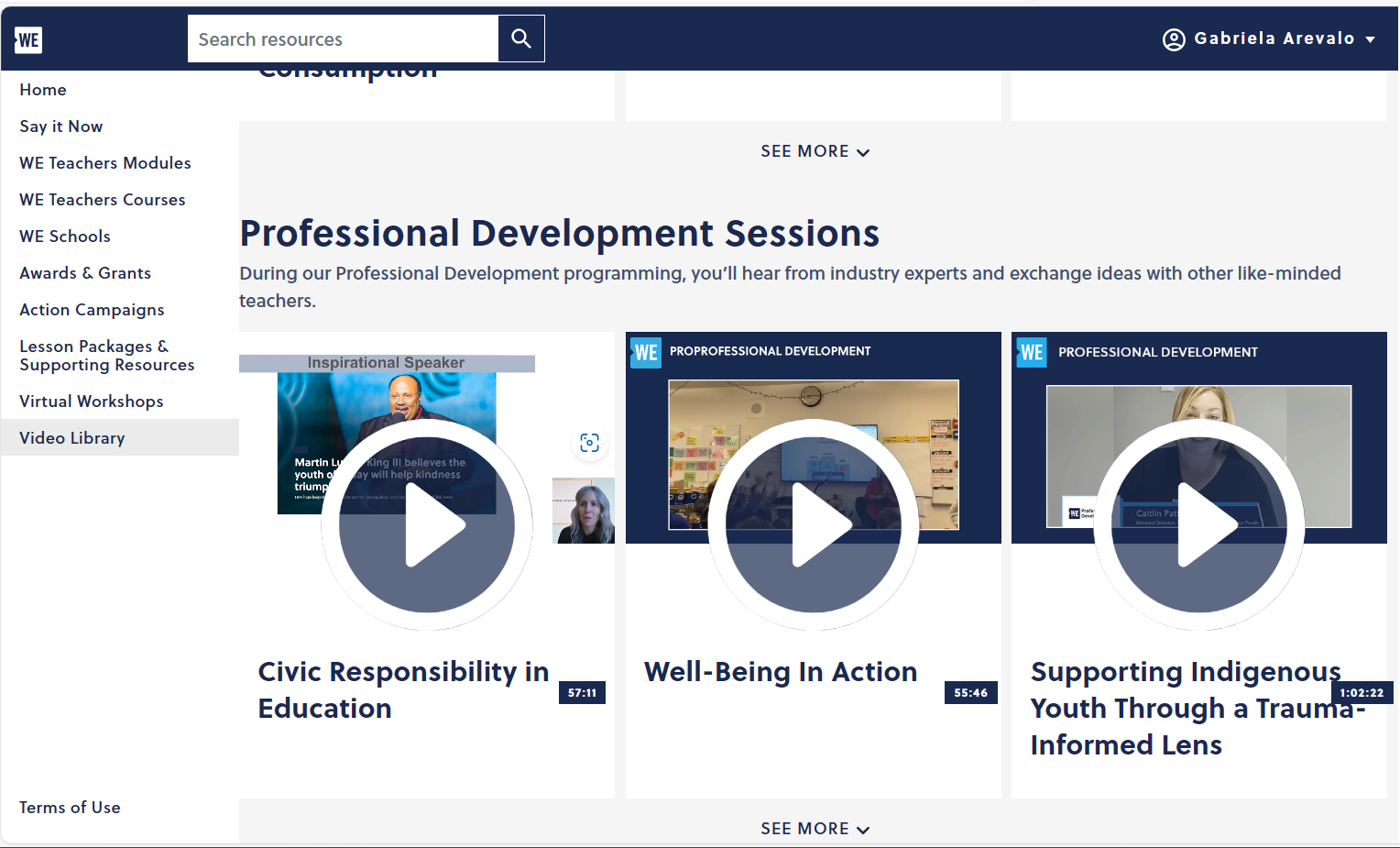
The WE Are Innovators Campaign

After visiting the WE Virtual Learning Center, I researched resources and different topics for the classroom. I found this great campaign that will benefit many students as well as people around the world. Many topics are brought to the spotlight in this lesson, and I thought that was a good approach to teaching students about the problems other countries and people face in this world that aren’t talked about enough.
WE Virtual Learning Center has created a campaign called the WE Are Innovators Campaign which will teach students about real-world issues and other countries that are struggling. Not only will the students learn about those issues, but they will learn how to help and make a positive difference in the world.

This screenshot above is the opening page but also does a great way of explaining what the campaign is and what it’s made for. This campaign is made for grades 4-12 and within every age group, there is a lesson plan adapted to their grade and learning levels. There are different activities that are made for every age group.

This lesson plan has different topics to teach students how to be innovative, some of those topics are:
- Inclusive and Sustainable Innovation
- Energy and Housing
- Food Waste
- Transportation Solutions
- Circular Economy and Nature
These are very prominent topics for students to learn about so they will have the opportunity to make a difference and educate others so they can make a difference too.
WE Virtual Learning Center provides many different resources for educators to teach their students about everyday issues. Many different topics can be found on their website, and all of them will be beneficial for students to learn about. Some day I would like to teach my students about these global issues just like WE learning has presented because I think it is very important for students to learn about what is going on in the world.
Thank you for reading!
Teaching Mental Well-Being In the Classroom

Education is not just about filling minds with facts and figures; it is about shaping individuals. When teachers focus on student well-being, they recognize the human element of education. It is about nurturing academic excellence, emotional intelligence, resilience, and overall mental health. After all, a healthy mind is a thriving mind.
WE Teachers
WE Teachers is a platform initiative designed by the WE organization. WE teachers specifically focus on providing educators with resources, tools, and support. The program empowers teachers to incorporate social and emotional service learning into their classrooms.
In addition, WE Teachers provides free resources, professional development opportunities, and a community for educators to connect and share ideas. The goal is to equip teachers with the tools to inspire their students to become active, compassionate, and engaged citizens. The program emphasizes the importance of academic and social development, fostering a sense of social responsibility among students.

Breaking the Stigma
WE Teachers has added a module where teachers can get ideas to teach about student well-being in the classrooms. Teaching student well-being helps break the stigma surrounding mental health. By incorporating discussions about emotions, stress management, and seeking help when needed, teachers and educators foster a culture where it’s okay not to be okay. This openness reduces the fear of judgment, encouraging students to reach out for support when needed.
WE Teachers Mental Well-Being Module
Teachers and educators can use this module to incorporate student well-being in the classroom. The module shows you how to understand the issue with facts, statistics, definitions, and protective and risk factors. In addition, it discusses the common mental health challenges and conditions that students can encounter in school, like stress, grief, loneliness and isolation, self-harm, body issues, etc. The module can be beneficial for teachers and educators to use in the classroom because it brings social-emotional learning, where to get help for students, self-care tips and tools, and worksheets to use for activities to make sure how the students are feeling.
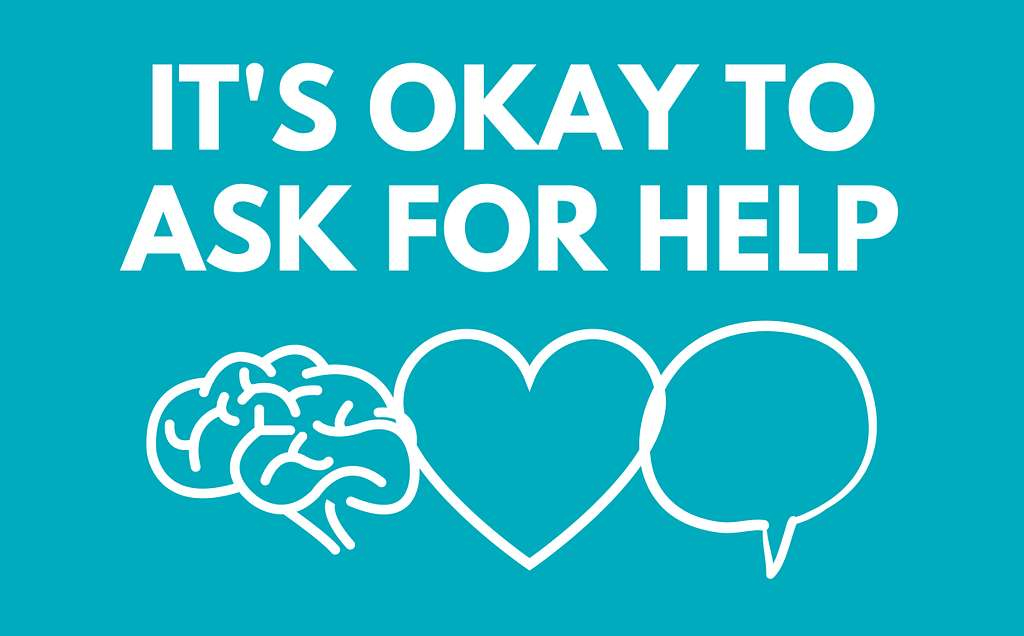
Building Resilience
Teachers and educators need to do mental health checks on their students to make sure they are doing okay. You are fostering resilience by equipping them with tools to navigate how they feel emotionally. Resilient individuals bounce back from difficulties, learn from experiences, and confidently face the future.
Creating a Positive Learning Environment
Imagine entering a classroom where you feel valued, supported, and safe expressing yourself. That is the power of a positive learning environment, starting with prioritizing well-being. When students feel mentally and emotionally secure, they are more likely to engage in learning, ask questions, participate, and collaborate with their peers. In addition, when students feel safe, it can boost their academic performance. They can concentrate better, retain information effectively, and perform well in exams.
How Would I Incorporate Teaching Student Well-Being In My Classroom?
Talking about mental health in the classroom is a valuable and important subject. Some tips to approach the topic with sensitivity and effectiveness that I would use in my classroom include:
- Creating a Safe Space: I would establish that my classroom is a safe and judgment-free zone. Everyone can share their thoughts and feelings if they are willing to.
- Choosing the Right Time: I would introduce the topic during a calm and open discussion time. It is crucial to avoid addressing it right before a test or in a rushed setting.
- Normalizing the Conversation: I would incorporate discussions about mental health as a regular part of my classroom because it helps reduce stigma and make it a more comfortable topic.
- Use Resources and Encourage Questions: I would discuss different resources like articles and videos that provide expert insights on mental health as they add credibility and diversity to the conversation. I would also let my students know it is okay to ask questions.
- Offer Support: I want to clarify to my students that I am here to support them. I would provide information about available resources, such as school counselors or myself, and emphasize the importance of seeking help when needed.
Conclusion
Teaching student well-being is an investment in the present and future of students in a classroom. By putting their mental and emotional health first, teachers and educators are not just shaping successful individuals academically but resilient, empathetic, and well-equipped individuals ready to tackle the complexities of life. It is essential to teach about mental health because it is part of our everyday lives. With WE Teachers’ resources, we can talk about mental health with students and tell them it is okay not to feel okay. After all, it is not just about the grade; it is about the journey and how there is always a light at the end of the tunnel.
Make sure to follow my Twitter (X) account: @taliana_ayala
7 Accessibility Tools
In this article, I will be introducing you to 7 different accessibility tools that can be very beneficial for students. Accessibility tools are utilized by students who may have a disability or learning disability, and they are tools to make their learning experiences easier. Not only are they designed to help those individuals with a disability, but they are also available for anyone to use. Because they are accessible to anyone, they are very helpful and can be beneficial in so many ways.
Jaws Screen Reader

Jaws screen reader is a great tool that was created for computer users with vision loss. Not only does this software provide screen reading, but it also provides braille for those who cannot read the screen at all. Jaws allows users who cannot see to use the internet and use technology just like anyone else. It provides different features to help them navigate the web, send emails, write documents, and create presentations.
ZoomText

ZoomText is another great software for those who have vision problems. Reading screens all day can take a toll on your eyes and some people have bad vision already. ZoomText allows computer users to magnify the words on the screen. This tool can be very helpful for people who cannot see closely or cannot see small items on the screen.
Select and Speak – Text to Speech (now known as iSpeech)

iSpeech is another great tool for students, and this one can be for people who may speak a different language. This program provides many different languages to choose from for translating. It also has the option to playback slow, regular, or fast for the user’s preference speed. This tool can also be used for translating certain words for assignments but mostly helps individuals who speak different languages.
Google Docs: Type With Your Voice

Google Docs provides a speech-to-text tool that can be very helpful for impaired users. Speech-to-text can be beneficial for users who cannot get their thoughts from their heads onto paper when typing or writing. The user will be able to speak into their device’s microphone and tweak any mistakes it comes up with. Usually, grammar and punctuation might need tweaking, but you can also speak the punctuation as well.
Read&Write

Read&Write is an extension of Google Chrome that can assist students with their reading and writing. This program can be great for students with disabilities as well as students who need extra help with an essay. Read&Write provides many features some of them being, text-to-speech, easy read-along, text and picture dictionaries, and many more features. This program can be beneficial for many students who need help with reading and understanding certain content.
QuickVoice Recorder

QuickVoice Recorder is a great tool for students who have trouble taking notes in class. This application allows the user to record memos of class lectures, notes, meetings, and much more so they are able to come back to it later. This is a great tool for students who also have trouble paying attention, and having access to the recording of a lecture can be beneficial for them.
Mindly

Mindly is an application which is for mind mapping, created to keep the user organized. This program lets the user create diagrams based off of how they’re thinking to keep themselves organized. Mindly is a great application for students who have trouble keeping their thoughts and work organized, and this app gives them a place to organize things how it works for them.
All of these tools are very helpful and beneficial for students and technology users with disabilities, or who need extra help. Each tool has different features that can help the user adapt to using technology more easily.
Thank you for reading!